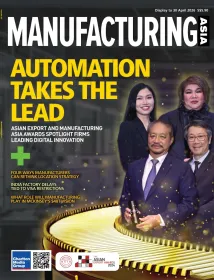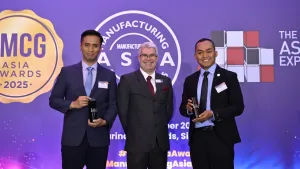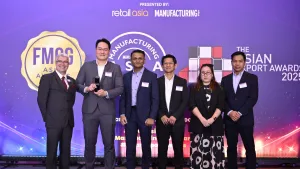
Here’s how Asia strengthens its supply chain
Economies in the region are ready for global macroeconomic shifts, analysts said.
Asia’s supply chain is consolidating internally and deepening cross-border synergies, in contrast to Europe and North America that are concentrating on reshoring and countering de-industrialisation, a report said.
“Unlike Europe and North America…Asia’s current trajectory points toward a decisive realignment – from fragmented, multi-chain rivalry to single-chain leadership, and from homogeneous competition to collaborative symbiosis,” Roland Berger said in its Asia’s supply chain reconfiguration report.
Analysts examined how Asian economies are prepared to cope with global macroeconomic shifts by identifying their strengths and weaknesses.
China remains Asia’s supply chain hub, but its role is changing rapidly as it moves from low- to mid-tier manufacturing.
Multinational companies are reallocating resources to China due to its strong base in photovoltaics and electric vehicles (EVs). Meanwhile, the nation is proritising self-sufficiency as foreign restrictions on semiconductors and other advanced sectors stand.
Japan leads in advanced materials, precision equipment, and advanced manufacturing, which are backed by government policies. The country’s key global growth sectors include automotive, industrial machinery, and chemicals.
To stay competitive, Japanese companies are advised to expand into the global South and implement China+1 strategies to diversify operations.
South Korea, which is caught between the US-China tensions, ranks amongst the world’s top nations for R&D, design, and component production.
US sanctions and tariffs are disrupting the country’s exports and global manufacturing networks, Roland Berger said. To address this challenge, South Korean firms must diversify production locations, analysts said.
Indonesia is emerging as Southeast Asia’s main supply chain hub. The country holds 42% of global nickel reserves, and is transforming into a major battery producer, with production capacity expected to increase from 10GWh in 2024 to 140GWh by 2030.
Vietnam is becoming a key player in Asia’s supply chains and leads ASEAN in manufacturing growth. The country targets by 2040 three semiconductor fabs, 300 design houses, 20 packaging plants. It is also becoming an emerging hub for EVs and electronics. Despite this, Vietnam heavily relies on the US and China, exposing it to tariff and demand shocks.
Thailand is Southeast Asia’s automotive hub, with plans to increase battery EV production from 93,000 units to 2.5 million by 2040. The country’s major investors include BYD, Great Wall, and Mercedes-Benz. Motor vehicles and electronics account for nearly 40% of Thailand’s exports.
Malaysia is leading in outsourced semiconductor assembly and testing (OSAT), contributing about one-third of global output. Penang and Johor are seen as emerging hubs for semiconductors and EV components. Meanwhile, its regional market share is declining, from 43% in 2018 to a projected 33% by 2025, analysts said.
Singapore attracts the largest share of foreign direct investment (FDI) in Southeast Asia, thanks to its logistics infrastructure, transparent legal framework, and skilled workforce. Medical technology and petrochemicals are amongst its core industries. However, one-third of machinery exports go to China and Hong Kong, exposing the city-state to geopolitical and trade disruptions.
The Philippines accounts for around 10% of global semiconductor assembly and testing capacity and possesses the world’s second-largest business process outsourcing (BPO) workforce. The country gives a balanced mix of goods exports and services income, according to Roland Berger. High electricity and production costs, and heavy export dependence on China and the United States are the Philippines’ challenges in the supply chain.
“If Asia can channel its scale, technology and resources into more integrated and resilient networks, the region will emerge as the primary architect of the next global value chain,” Roland Berger said.
















